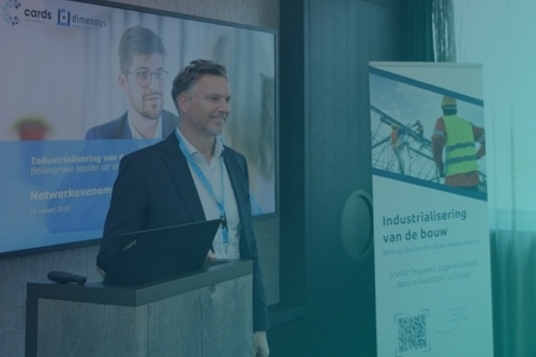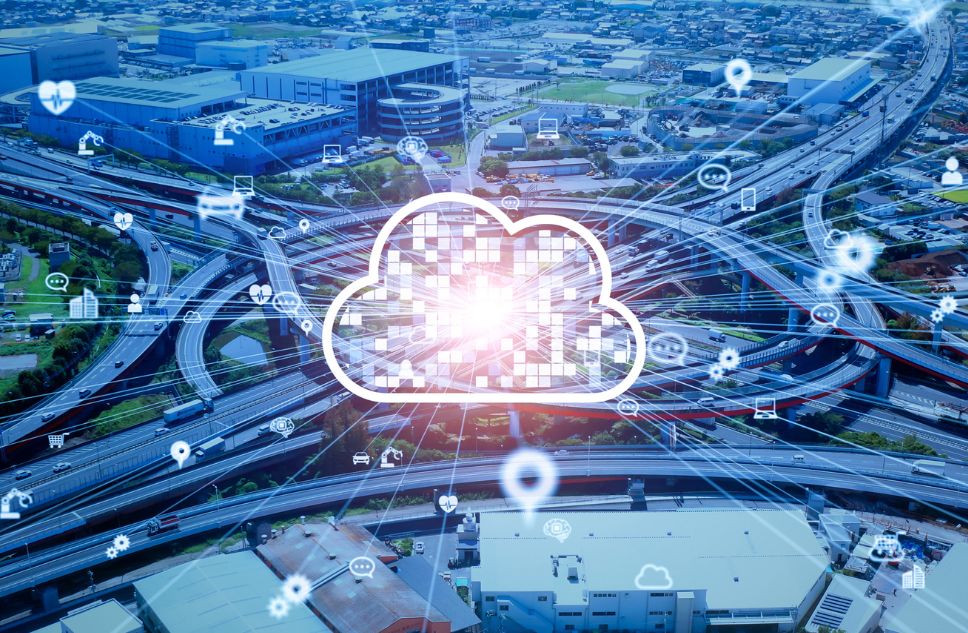News & Blogs
Stay updated with the latest news, insights, and expert blogs from Emixa. Explore industry trends, digital innovations, and company updates all in one place.

- SAP
Asset Intelligence Network (AIN) for Data Exchange in the Chain
One of the most important trends within Asset Management concerns increasing the availability of assets through the application of data. To achieve this, information is needed. Information that is produced and recorded by various stakeholders in the chain during the entire life cycle of an asset.

- SAP
Choosing the Right Maintenance Strategy with SAP ASPM
For asset-intensive companies, it is important to always strive for the highest possible availability of assets and safety and the lowest possible costs. But how do you achieve this? SAP Asset Strategy and Performance Management (SAP ASPM) offers the excellent solution for this. In this blog we explain how you can choose the right maintenance strategy with SAP ASPM, including the latest features.

- SAP
SAP S/4HANA Release 2022 – New EAM Functionalities for Maintenance
SAP is continuously optimizing and updating S/4HANA. Just think of the Maintenance Planning Overview in the initial S/4HANA release. With this year's new S/4HANA release, new functionalities have been added to the Enterprise Asset Management domain. It is clear that SAP is investing in its development. This year's recent release contains best practice processes and capabilities that many companies have been dreaming of for years. It is crucial to always upgrade your system to the latest version to continue to make optimal use of SAP S/4HANA. In this blog we explain the main new functionalities in the S/4HANA 2022 release with which SAP can support the maintenance process even better. Figure 1: The Enterprise Asset Management dashboard in the initial S/4HANA release New processes with SAP's new 9-phase model The SAP maintenance process has been the same for years and is fairly standard. Companies regularly use user statuses to further expand the maintenance process and better tailor it to their company. With SAP's new 9-phase model, this is no longer necessary. With the 9-phase model, SAP is adding new maintenance processes - called 'new scope items' - to the 2022 release. In addition, new Fiori apps now guide users through the process and notifications, orders and operations still form the basis of every process. Examples of these new processes: Reactive Maintenance (corrective maintenance) Proactive Maintenance (preventive maintenance) Improvement Maintenance (project based maintenance) Operational and Overhead Maintenance (routines, inspections, ...) Figure 2: SAP's 9-phase model and the relationship between notifications, work orders and operations Create maintenance reports clearly with the priority matrix Creating a notification for maintenance tasks is often the start of the maintenance process. This is already a simple action in SAP S/4HANA, but still lacks some crucial features. After Maintenance Managers and Gatekeepers have been getting gray hairs for years when trying to properly prioritize maintenance reports, you will now no longer see a selection list, but rather a priority matrix with an overview. It is now possible to determine the priority of maintenance reports using a priority matrix. Priority is determined based on the chance of failure and its effect. You can configure the priority matrix yourself for different categories such as production, safety and environment. Figure 3: The new 'Create Maintenance Request' app in SAP for maintenance notifications with the priority matrix As you can see in the image above, the new 'Create Maintenance Request' app contains new fields for Failure Mode and Detection Method. The breakdown indicator can also be set more easily. Notifications can now also be automatically saved as drafts after creation. You can edit these afterwards before sending them. Easily follow up on maintenance notifications With the new 'My Maintenance Request' app you can easily follow up on your own maintenance reports; from creation to complete handling or rejection. If the applications are incomplete or more information is required, this will also be made clear. In short, the 'My Maintenance Request' app is ideal for Operation Managers. Figure 4: The new 'My Maintenance Request' app Gatekeeping finally supported A process that was not well supported by standard SAP is Gatekeeping. Even though this is the process step that should ensure good cooperation between operations and maintenance, there were no tools to implement this optimally in SAP. The Gatekeeper can now use the new 'Screen Maintenance Request' app to thoroughly check new maintenance reports and, if necessary, send them back to the requester and reject or approve them. Of course, both the priority and the deadline of the notification can be revised. Figure 5: The new functionality for checking maintenance messages Many more new EAM functionalities in SAP S/4HANA This blog contains some interesting new EAM functionalities in the S/4HANA release 2022. In addition to the above functionalities, there are more, including: An extensive 'maintenance order approval' process with workflows that allows you to approve more than just costs The operation execution stages: PRE, MAIN & POST. This allows you to plan the placement of racks on the work order, for example Bundling orders with Maintenance Planning Buckets New Maintenance Backlog Overview for a better overview of all maintenance tasks on the backlog Even better planning with SAP Resource Scheduling for Hana (RSH) The implementation of the new S/4HANA release that is suitable for you With our expertise in Enterprise Asset Management for project and asset-intensive organizations, we can support the IT department in the implementation of new releases that are suitable for you. We can also fully take care of the activation of the new functionalities. With our years of expertise in SAP and with specific project and asset-intensive processes, we map the current process and see which new EAM functionalities in SAP S/4HANA release 2022 can help you support current maintenance processes even better. Vincent Beumer Vincent is a marketing manager and highly experienced consultant with extensive knowledge on Digital Transformation and Analytics within the SAP-domain. Get in touch Ready to make a business change? At Emixa, we'd be glad to share our comprehensive insights. Contact us to discover how our approach can help your organization thrive in the cloud era. Let's embark a journey towards enhanced efficiency and effectiveness together!

- SAP
The latest innovations within SAP Intelligent Asset Management
SAP has launched the latest version of SAP Intelligent Asset Management (IAM). This version, release 2105, is more user-friendly, more extensive and easier to deploy within your organization. Curious about what IAM can do for your organization? We have listed the most important new features for you. The new release brings the following functionalities: Option to test new functionalities in advance in the preview environment One cloud implementation that supports multiple SAP ERP systems Expansion of the assignment of functions to new objects Sharing work order operations with partners Improved usability of assessments Assigning spare parts to failure modes Controlling SAP ASPM and ERP feedback loop via workflow tasks SAP Intelligent Asset Management (IAM) Cloud Test new functionalities in advance in the preview environment SAP updates the cloud solution every three months. New functionalities can be tested in advance in a preview environment without disrupting the production environment. This way you can determine in advance which functions add value to your organization. You are perfectly prepared to use those components immediately after release. One cloud implementation supports multiple SAP ERP systems For organizations that work with different SAP ERP systems, the step to the cloud seems big. Should a separate cloud environment for IAM solutions be set up for each SAP ERP system? Is it necessary to integrate first before migration? As of the latest version, the answer to these questions is 'neither'. From release 2105, multiple SAP ERP systems can be integrated within one sub-account. These can be both SAP ECC and SAP S/4HANA environments. Synchronize assets from the different systems within the platform with the IAM cloud solution. SAP Asset Intelligence Network (AIN) Expansion of the assignment of functions to new objects You purchase assets to fulfill a function. Take an oven for example; one of the functions of an oven is to produce hot air. The function of an asset determines the failure factors. In the case of an oven: what can hinder the production of hot air, and how can this be prevented? Instead of separate definitions per asset, it is now also possible to define functions for a model. Individual assets then inherit the functions from the model that is assigned. Instead of recording all functions for fifty ovens separately, you manage them based on one oven model. This reduces the administrative burden accordingly. Sharing work order operations with partners Maintenance of complex assets can be carried out by different parties. In the new version of SAP AIN, work order operations can be shared with partners. Individual operations can be assigned to subcontractors, who receive read and write rights based on their needs. For example, the person who maintains the conveyor belt can check what the attached machine is doing, but only write maintenance on the belt. Figure 1: Share work order operations with partners using SAP AIN SAP Asset Strategy & Performance Management (ASPM) Improved usability of assessments SAP has implemented a number of improvements for both the Risk and Criticality and Reliability Centered Maintenance (RCM) analysis. When carrying out a Risk and Criticality analysis, it is now possible to gain insight into the weighting of the answers via the information button. In addition, a number of long texts are now also displayed for a more detailed explanation. Figure 2: Gain insight into the weighting of answers with SAP Assigning spare parts to failure modes The spare parts required depend on the failure of the asset. In SAP ASPM it is now possible to link spare parts to failure modes. This makes it immediately clear to employees which parts are needed. Figure 3: Link spare parts to failure modes with SAP ASPM Control feedback loop SAP ASPM and ERP via workflow tasks In SAP ASPM you define the maintenance strategy. SAP ERP generates the necessary work orders to perform this maintenance. In an earlier release, a workflow was created between SAP ASPM and SAP ERP with which recommendations from ASPM are assigned as a workflow task to SAP users within ERP. For example, if the maintenance engineer within ASPM determines that the number of visual inspections of a sensor needs to be doubled, a workflow task will appear in ERP. In the latest release, a new workflow task has been added with which additional information from ASPM can be requested. This is how it arises Get in touch Ready to make a business change? At Emixa, we'd be glad to share our comprehensive insights. Contact us to discover how our approach can help your organization thrive in the cloud era. Let's embark a journey towards enhanced efficiency and effectiveness together! Vincent Beumer Vincent is a marketing manager and highly experienced consultant with extensive knowledge on Digital Transformation and Analytics within the SAP-domain. Get in touch Ready to make a business change? At Emixa, we'd be glad to share our comprehensive insights. Contact us to discover how our approach can help your organization thrive in the cloud era. Let's embark a journey towards enhanced efficiency and effectiveness together!

- Construction & Infrastructure
Review of Expert Event 'Industrialization of Construction'
March 24, 2022 - Experts from the construction and manufacturing industry come together to inspire each other about the opportunities to build smarter and more economically.

- SAP
IAM news flash from ASPM to APM and better integration with S4HANA
SAP is always working to make their new cloud solutions even better. New functionalities are released every quarter and this also applies to SAP's Intelligent Asset Management (IAM) suite. In this blog we talk about the latest development at SAP IAM with the ASPM and PAI solutions. We are also talking about the integration with the classic S/4HANA systems, which has been improved with this new development. Merging and improving SAP ASPM and PAI with the new APM solution The fact that SAP often changes the name of its IT solutions is not new. Asset Strategy and Performance Management (ASPM) and Predictive Asset Insights (PAI), part of the entire SAP Intelligent Asset Management suite, will now be combined in the updated SAP ASPM solution, called 'Asset Performance Management (SAP APM)'. The SAP APM solution now contains two components, namely Asset Strategy and Asset Health. These two components come from the SAP solutions: ASPM and PAI. Figure 1: The possibilities with the updated SAP APM solution that now includes both Asset Strategy and Asset Health The image below shows how SAP APM now complements all classic EAM functionalities. Figure 2: The addition of SAP APM to the entire IAM suite Optimal integration of SAP APM to Intelligent Asset Management in S/4HANA and ECC Strong integration is often SAP's strength. SAP is therefore always busy trying to integrate 'young' solutions, which are still in one of the first development phases, even more strongly with S/4HANA and ECC. This also applies to the integration between ASPM and Enterprise Asset Management (EAM). This integration has now been addressed and improved by SAP in the updated SAP APM solution, which makes the solution even more attractive for handling and carrying out the right maintenance at the right time. The integration between APM and EAM is extremely important. Both APM and EAM are necessary to cover all desired, necessary functionalities for the entire Maintenance and Asset Management process. All functionalities of APM and EAM are now maintained with strong mutual integration. That is exactly where the power of the updated APM solution lies. All necessary functionalities are now integrated with each other via SAP APM. This makes it even easier to use the right maintenance strategy. Figure 3: All necessary functionalities integrated into SAP APM In order to define the right maintenance strategy, to be able to implement it properly in the IT system and to then correctly monitor, plan and subsequently analyze all assets, it is important that ASPM and EAM work together. That is now happening in APM. The image below shows this visually. Figure 3: The collaboration between ASPM and EAM in the updated SAP APM solution Vincent Beumer Vincent is a marketing manager and highly experienced consultant with extensive knowledge on Digital Transformation and Analytics within the SAP-domain. Get in touch Ready to make a business change? At Emixa, we'd be glad to share our comprehensive insights. Contact us to discover how our approach can help your organization thrive in the cloud era. Let's embark a journey towards enhanced efficiency and effectiveness together!